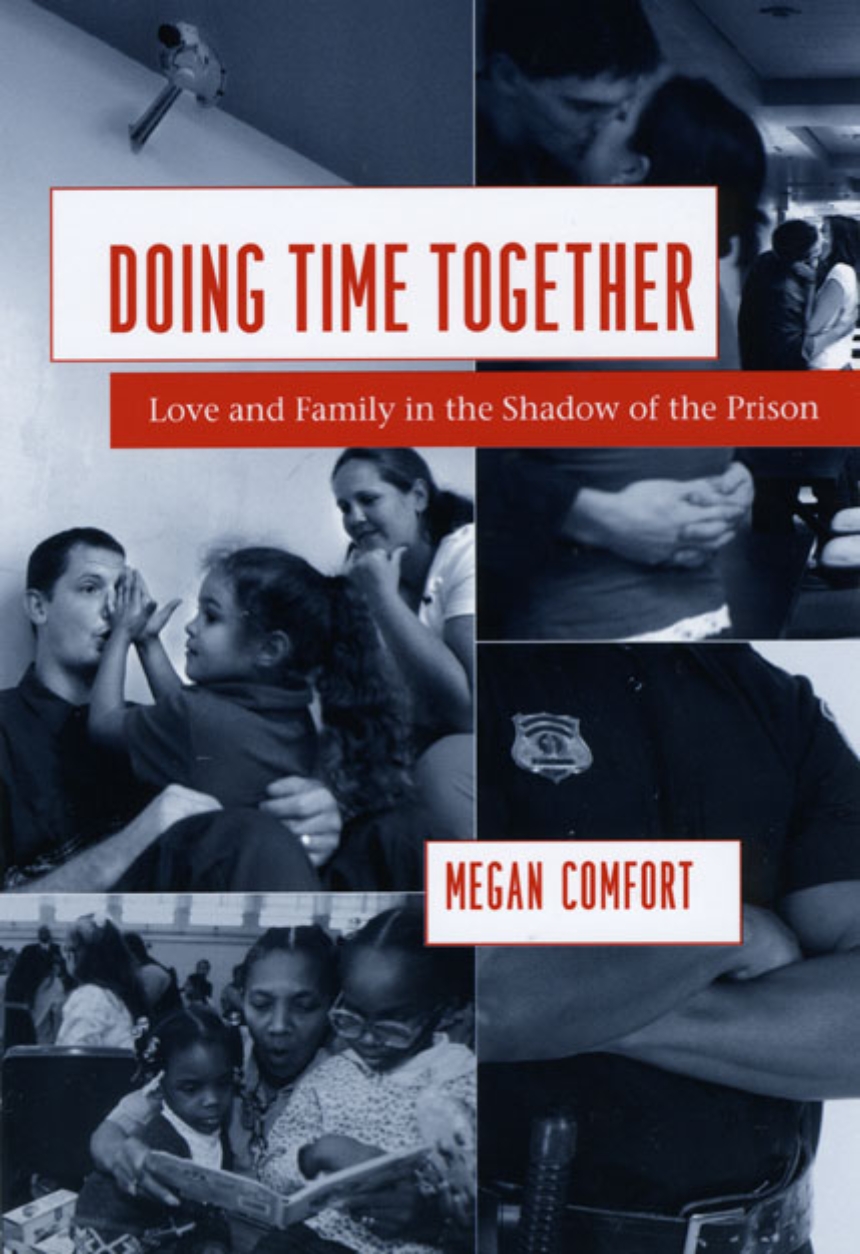Doing Time Together
Love and Family in the Shadow of the Prison
By quadrupling the number of people behind bars in two decades, the United States has become the world leader in incarceration. Much has been written on the men who make up the vast majority of the nation’s two million inmates. But what of the women they leave behind? Doing Time Together vividly details the ways that prisons shape and infiltrate the lives of women with husbands, fiancés, and boyfriends on the inside.
Megan Comfort spent years getting to know women visiting men at San Quentin State Prison, observing how their romantic relationships drew them into contact with the penitentiary. Tangling with the prison’s intrusive scrutiny and rigid rules turns these women into “quasi-inmates,” eroding the boundary between home and prison and altering their sense of intimacy, love, and justice. Yet Comfort also finds that with social welfare weakened, prisons are the most powerful public institutions available to women struggling to overcome untreated social ills and sustain relationships with marginalized men. As a result, they express great ambivalence about the prison and the control it exerts over their daily lives.
An illuminating analysis of women caught in the shadow of America’s massive prison system, Comfort’s book will be essential for anyone concerned with the consequences of our punitive culture.
Megan Comfort spent years getting to know women visiting men at San Quentin State Prison, observing how their romantic relationships drew them into contact with the penitentiary. Tangling with the prison’s intrusive scrutiny and rigid rules turns these women into “quasi-inmates,” eroding the boundary between home and prison and altering their sense of intimacy, love, and justice. Yet Comfort also finds that with social welfare weakened, prisons are the most powerful public institutions available to women struggling to overcome untreated social ills and sustain relationships with marginalized men. As a result, they express great ambivalence about the prison and the control it exerts over their daily lives.
An illuminating analysis of women caught in the shadow of America’s massive prison system, Comfort’s book will be essential for anyone concerned with the consequences of our punitive culture.
256 pages | 8 halftones, 6 line drawings, 6 tables | 6 x 9 | © 2008
Sociology: Criminology, Delinquency, Social Control, Race, Ethnic, and Minority Relations, Sociology--Marriage and Family
Reviews
Table of Contents
Acknowledgements
Chapter 1: Outside the Prison Walls
Chapter 2: “On-Line” at San Quentin
Chapter 3: “We Share Everything We Can the Best Way We Can”
Chapter 4: “Papa’s House”: The Prison as Domestic Satellite
Chapter 5: “It’s a Lot of Good Men behind Walls!”
Chapter 6: The Long Way Home
Chapter 2: “On-Line” at San Quentin
Chapter 3: “We Share Everything We Can the Best Way We Can”
Chapter 4: “Papa’s House”: The Prison as Domestic Satellite
Chapter 5: “It’s a Lot of Good Men behind Walls!”
Chapter 6: The Long Way Home
Appendix 1: Setting and Methods
Appendix 2: An Orientation to the Research Literature
Appendix 3: United States Carceral Population, 1980-2000
Appendix 4: Field Documents
Appendix 2: An Orientation to the Research Literature
Appendix 3: United States Carceral Population, 1980-2000
Appendix 4: Field Documents
References
Index
Index
